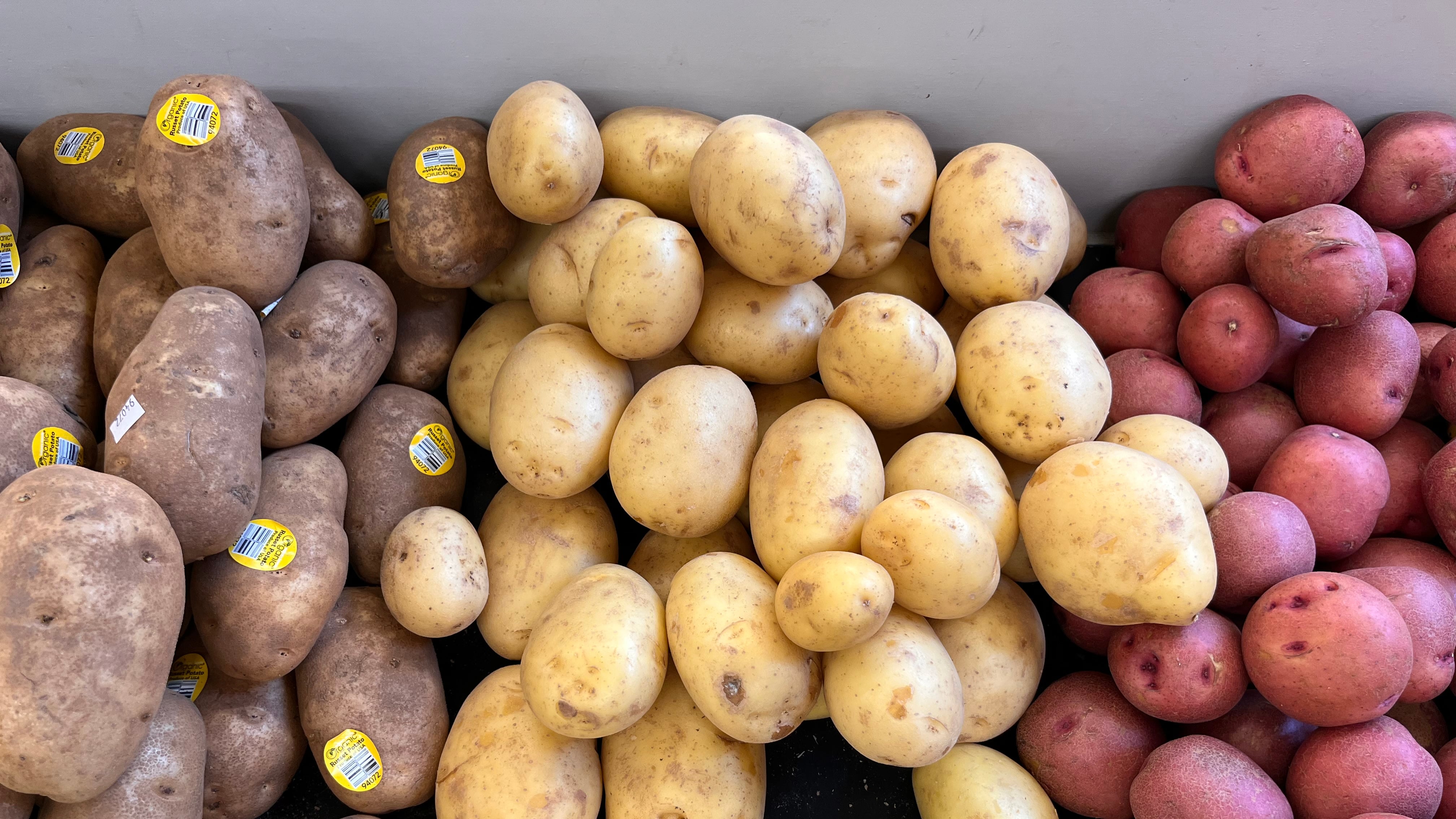While grocery shopping at night, I’ve noticed the potatoes in the produce section being covered with some kind of blanket or tarp. I haven’t seen any other vegetables treated this way. Has the Oregon Liquor and Cannabis Commission banned potato sales after 9 pm? Or do the tubers have trouble sleeping with the light shining in their “eyes”? (Get it?) —Kathie L.
Don’t quit your day job, Kathie. Still your observation is sound: Grocers do cover their potatoes at night, and their reasons for doing so open a window onto the history of agriculture and the weirdness of plants in general.
It’s an oft-repeated factoid that when potatoes (and tomatoes) were first brought to Europe from the New World, Europeans thought they were poisonous. In our enlightened era, we chuckle at such ignorance. Italians spurning tomatoes? Potatoes shunned by the Irish? How stupid of them!
Or not. Potatoes and tomatoes (as well as eggplant and most peppers) are members of the nightshade family. What else is in that family? There’s deadly nightshade, also called belladonna, which was used to poison the Roman emperor Augustus. There’s also mandrake, whose (apocryphal) scream while being harvested was said to kill anyone who heard it. And what about henbane, a toxic hallucinogen once believed to be an ingredient in witches’ potions? Given what Europeans knew about nightshades at the time, maybe it wasn’t that crazy to approach similar-seeming vegetables with caution.
Today we know that members of the family Solanaceae work their magic through an array of alkaloids of varying potency. Some of these are household names, like nicotine (tobacco is also a nightshade) and capsaicin. Others are potent pharmaceuticals, like scopolamine and atropine. Most, however, are obscure chemical also-rans, including solanine, which—drum roll please—is produced when potatoes are exposed to light for long periods. (Long exposure to light also turns potatoes green, which has nothing to do with solanine directly, but the two things usually go hand in hand.)
Solanine is mildly toxic and can produce some digestive symptoms. You’d have to eat multiple pounds of solid-green potatoes to be in any real danger, but the grocery stores prefer a belt-and-suspenders approach. Given that we’re dealing with the family tree that gave us datura, I suppose I can understand this—who wants to mess with something even slightly related to the plant that made the lawyer in Fear and Loathing in Las Vegas talk like a raccoon?
Questions? Send them to dr.know@wweek.com.

